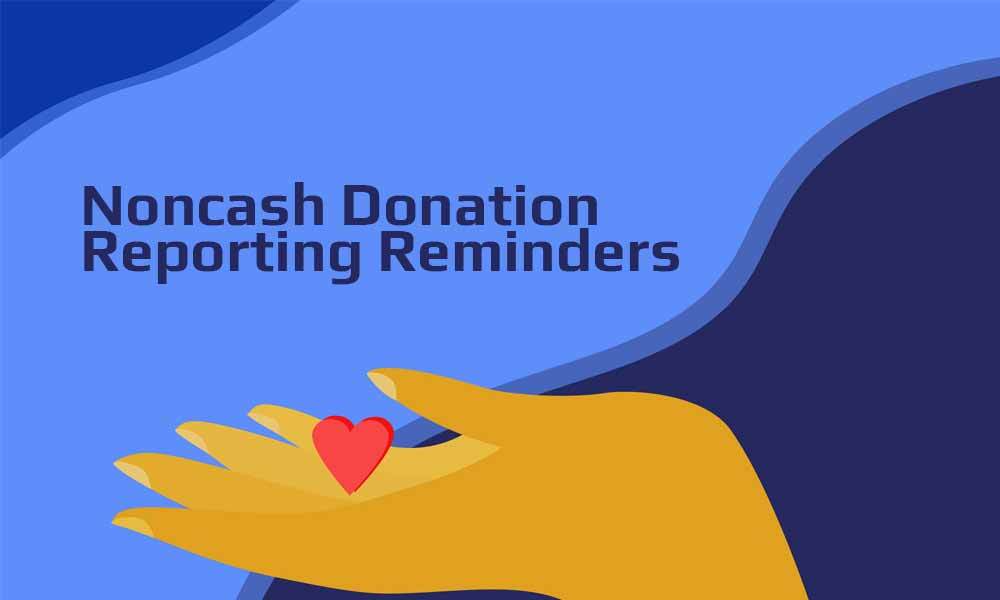In our efforts to keep industry members and clients informed of IRS requirements for donation documentation, we are providing the following reminders, with regard to donation substantiation requirements.
From IRS Publication 526 Charitable Contributions
Noncash Deductions of Less than $250:
If you make any noncash contribution, you must get and keep a receipt from the charitable organization showing:
- 1The name and address of the charitable organization,
- 2The date of the charitable contribution, and
- 3A description of the property in sufficient detail for a person not generally familiar with the type of property to understand that the description is the contributed property.
Deductions of at Least $250 but Not More Than $500
You must get and keep a contemporaneous written acknowledgement of your contribution from the qualified organization. If more than one contribution of $250 or more, you must have either a separate acknowledgement for each or one acknowledgement that shows your total contributions. This must include items 1-3 above as well as:
- 1It must be written
- 2It must include:
- adescription (but not necessarily the value) of any property you contributed),
- bWhether the qualified organization gave you any goods or services as a result of your contribution (other than certain token items and membership benefits), and
- cA description and good faith estimate of the value of any goods or services described in (b). If the only benefit you received was an intangible religious benefit (such as admission to a religious ceremony) that generally isn’t sold in a commercial transaction outside the donative context, the acknowledgement must say so and doesn’t need to describe or estimate the value of the benefit.
- 3You must get it on or before the earlier of:
- aThe date you file your return for the year you make the contribution, or
- bThe due date, including extensions, for filing the return.
- cA description and good faith estimate of the value of any goods or services described in (b). If the only benefit you received was an intangible religious benefit (such as admission to a religious ceremony) that generally isn’t sold in a commercial transaction outside the donative context, the acknowledgement must say so and doesn’t need to describe or estimate the value of the benefit.
Deductions Over $500 but Not Over $5,000
If you claim a deduction over $500 but not over $5,000 for a noncash charitable contribution, you must have the contemporaneous written acknowledgement and written records described in the last section. Your records must also include:
- How you got the property, for example, by purchase, gift, bequest, inheritance, or exchange;
- The approximate date you got the property or, if created, produced, or manufactured by or for you, the approximate date the property was substantially completed; and
- The cost or other basis, and any adjustment to the basis, and any adjustments to the basis, of property held less than 12 months and, if available, the cost or other basis of property held 12 months or more. This requirement, however, doesn’t apply to publicly traded securities.
**The cost or basis of the property must be included on form 8283 p. 2 Part 1 Boxes (d)(e) and (f). The recent court case Loube v. Commissioner January 2020 the taxpayer did not fill out this portion of the 8283, along with other issues with the form and appraisal. Clients should work with their tax professional to ensure these fields are completed with accuracy.
Deductions Over $5,000
You must have all of the requirements above as well as a “Qualified Appraisal” by a “Qualified Appraiser,” who uses correct valuation methods.
A Few Questions to Ask Your Appraiser:
- 1Have they earned an appraisal designation from a recognized professional appraiser organization? If so, are they accredited members?
- 2What level of college education do they have and in what fields were their undergraduate or graduate studies?
- 3Have they met the minimum education and experience requirements set forth by the IRS and appraisal organizations?
- 4What methodology for valuation do they use? Review of accounting standards for valuation and appraisal organization guidelines, the Sales Comparison Approach should be used primarily. If the appraiser does not use this approach, please ask them why.


